广东工业大学硕士学位论文
(工程硕士)
基于机器视觉的手机屏幕玻璃缺陷检测
方法研究
萧显
二〇一九年五月
。
�
分类号: 学校代号:11845
UDC: 密级: 学 号:2111601243
广 东 工 业 大 学 硕 士 学 位 论 文
(工程硕士)
基于机器视觉的手机屏幕玻璃缺陷检测
方法研究
萧显
指导教师姓名、职称: 袁清珂教授
校外导师姓名、职称: 梅领亮 工程师
学科(专业)或领域名称: 机械工程
学生所属学院: 机电工程学院
论文答辩日期: 2019 年 5 月
�
A Dissertation Submitted to Guangdong University
of Technology for the Degree of Master
(Master of Engineering)
Research on Detection Method of Cellphone
Screen Glass Defect Based on Machine Vision
Master Candidate:Xiao Xian
Supervisor:Prof. Yuan Qingke
May 2019
School of Electromechanical Engineering
Guangdong University of Technology
Guangzhou, Guangdong, P. R. China, 510006
�
广东工业大学硕士学位论文
摘 要
在移动终端设备越来越普及的发展趋势下,数码产品如笔记本电脑、相机、
平板电脑等使用频率越来越高,手机更是在人们日常生活中占有不可或缺的重要地
位。触摸屏作为手机的重要构成部分,屏幕玻璃的质量好坏直接关系到手机的正常
使用,玻璃盖板上的缺陷会影响其机械特性及光学性质,严重破坏产品使用价值。
因此,对玻璃盖板生产环节中的瑕疵缺陷检测是十分重要的。且针对目前手机产品
更新换代频率越来越高,生产制造需求量大的背景下,传统人工检测无法满足,应
用机器视觉代替传统方法也是目前工业生产的发展趋势。针对以上情况现状,本文
对玻璃盖板生产流程和缺陷检测标准进行分析研究,对常见缺陷类型和现有检测理
论进行讨论,设计了玻璃盖板缺陷检测系统的总体方案;对比分析了不同预处理方
法在玻璃缺陷上的应用效果,对玻璃边缘缺陷及内部缺陷检测分类算法进行深入的
研究讨论,并完成相关仿真实验测试。本文的主要研究内容如下:
(1)针对手机玻璃盖板生产工艺流程和缺陷检测标准要求,基于缺陷图像数
据特点分析,构建了玻璃缺陷检测系统。系统由光源成像系统、图像采集装置、图
像处理系统、系统软件等部分组成。
(2)对比分析当前常用的图像预处理技术,基于图像平滑滤波、形态学操
作、边缘检测算法的讨论分析,分别针对盖板玻璃边缘缺陷和内部缺陷的特点,采
用对应合适的预处理方法,并在实际样本上做仿真实验,得出结果。
(3)对于玻璃边缘的崩边缺陷,经过预处理后,采用行列像素遍历搜索的方
法得出边缘数据点集,对比最小二乘法和随机抽样一致的仿真实验效果,最终选择
随机抽样一致方法拟合出边缘直线模型,根据实际数据与拟合模型偏差判断出边缘
缺陷区域。
(4)基于玻璃内部缺陷的特性,探讨并提取出缺陷图像的形态学特征和不变
矩特征;为了得到更好的训练模型,讨论svm方法的的参数选择和优化,提出讨论
解决样本不均匀的方法,有效提高分类的准确率。
关键词:缺陷检测;机器视觉;图像处理;遍历搜索;特征提取
Ⅰ
�
ABSTRACT
ABSTRACT
Under the trend of increasing popularity of mobile terminal devices, digital products
such as notebook computers, cameras, and tablets are becoming more and more frequently
used, and mobile phones are indispensable in people's daily lives. The touch scree n is an
important part of the mobile phone. The quality of the screen glass is directly related to
the normal use of the mobile phone. The defects on the glass cover will affect its
mechanical and optical properties and seriously damage the use value of th e product.
Therefore, it is very important to detect defects in the production of glass cover. In view
of the fact that the current frequency of mobile phone product replacement is getting
higher and higher, and the demand for manufacturing is large, traditional manual testing
cannot be satisfied. The application of machine vision instead of the traditional method is
also the development trend of industrial production. In view of the above situation, this
paper analyzes the glass cover production process and defect detection standards,
discusses the common defect types and existing detection theories, designs the overall
scheme of the glass cover defect detection system, and compares the different
pretreatments. The application of the method on glass defects, in-depth research and
discussion on the glass edge defect and internal defect detection classification algorithm,
and complete the relevant simulation test. The main research contents of this paper are as
follows.
(1) According to the production process flow and defect detection standard requirements
of mobile glass cover, based on the analysis of defect image data characteristics, a glass
defect detection system was constructed. The system consists of a light source imaging
system, an image acquisition device, an image processing system, and system software.
(2) Contrasting and analyzing the currently used image preprocessing techniques, based
on the analysis and analysis of image smoothing filtering, morphological operations and
edge detection algorithms, respectively, corresponding to the characteristics of edge
defects and internal defects of the cover glass, corresponding to appropriate pretreatment
methods, And do simulation experiments on the actual samples, and the results are
Ⅲ
�
广东工业大学硕士学位论文
obtained.
(3) For the chipping defects of the glass edge, after pre-processing, the edge data point set
is obtained by the method of row and column pixel traversal search, and the simulation
experiment results which are consistent with the least squares method and the random
sampling are compared, and finally the random sampling consistent method is selected.
The edge straight line model is combined, and the edge defect area is determined according
to the deviation between the actual data and the fitted model.
(4) Based on the characteristics of internal defects of glass, the morphological features
and invariant moment features of the defect image are discussed and extracted. In order to
get a better training model, the parameter selection and optimization of svm method are
discussed, and discussion is made to solve the sample non-uniformity. The method
effectively improves the accuracy of the classification.
Keyword: defect detection,machine vision,image Processing, traversal,feature extraction
Ⅱ
�
目录
目录
摘 要 ................................................................................................................................... I
ABSTRACT ....................................................................................................................... II
目录 .................................................................................................................................. IV
CONTENTS .................................................................................................................... VII
第一章 绪论 ....................................................................................................................... 1
1.1 机器视觉研究状况 .............................................................................................. 1
1.2 本课题研究背景与意义 ...................................................................................... 2
1.3 国内外研究现状 .................................................................................................. 4
1.3.1 国内外研究现状及分析 ........................................................................... 4
1.3.2 国外研究现状 ........................................................................................... 5
1.3.3 国内研究现状 ........................................................................................... 6
1.4 课题主要研究内容和结构框架 .......................................................................... 6
1.5 本章总结 .............................................................................................................. 7
第二章 玻璃缺陷检测系统的总体设计方案 ................................................................... 8
2.1 玻璃盖板生产环节概述 ...................................................................................... 8
2.1.1 玻璃盖板生产流程与工艺分析 ............................................................... 8
2.1.2 玻璃盖板缺陷造成原因及检验标准 ..................................................... 11
2.2 缺陷检测系统设计 ............................................................................................ 13
2.3 本章小结 ............................................................................................................ 16
第三章 玻璃边缘检测算法设计 ..................................................................................... 18
3.1 图像预处理分析 ................................................................................................ 18
3.1.1 玻璃图像滤波算法 ................................................................................. 18
3.1.2 玻璃图像形态学操作 ............................................................................. 22
Ⅳ
�
广东工业大学硕士学位论文
3.1.3 滤波处理结果 ......................................................................................... 24
3.2 玻璃崩边检测方法 ............................................................................................ 24
3.2.1 边缘轮廓区域提取概述 ......................................................................... 24
3.2.2 常用图像配准方法 ................................................................................. 25
3.2.3 轮廓相似度测度 ..................................................................................... 27
3.2.4 差影运算及缺陷分割 ............................................................................. 29
3.3 基于搜索线的边缘缺陷分割 ............................................................................ 30
3.3.1 边缘线上标记点提取 ............................................................................. 30
3.3.2 标记点直线拟合方法 ............................................................................. 31
3.3.3 缺陷判断准则 ......................................................................................... 35
3.4 本章小结 ............................................................................................................ 37
第四章 盖板玻璃表面缺陷分类方法 ............................................................................. 39
4.1 盖板玻璃表面缺陷分割 ..................................................................................... 39
4.1.1 基于模板匹配的表面缺陷提取 ............................................................. 39
4.1.2 同一区域缺陷合并 ................................................................................. 40
4.2 缺陷图像的特征提取 ........................................................................................ 41
4.2.1 缺陷分类特性 .......................................................................................... 41
4.2.2 缺陷图像的特征参数介绍 ..................................................................... 42
4.3 基于 SVM 的表面缺陷分类 .............................................................................. 46
4.3.1 SVM(支持向量机)概述 ..................................................................... 46
4.3.2 SVM 参数选择 ........................................................................................ 49
4.3.3 C-SVM 的参数设计及优化 .................................................................... 52
4.3.4 本文 SVM 缺陷分类模型训练过程....................................................... 53
4.3.5 实验结果与分析 ..................................................................................... 56
4.4 缺陷识别分类软件界面介绍及其实现 ............................................................ 57
4.5 本章总结 ............................................................................................................ 58
总结与展望 ....................................................................................................................... 60
参考文献 ........................................................................................................................... 63
· Ⅵ
�

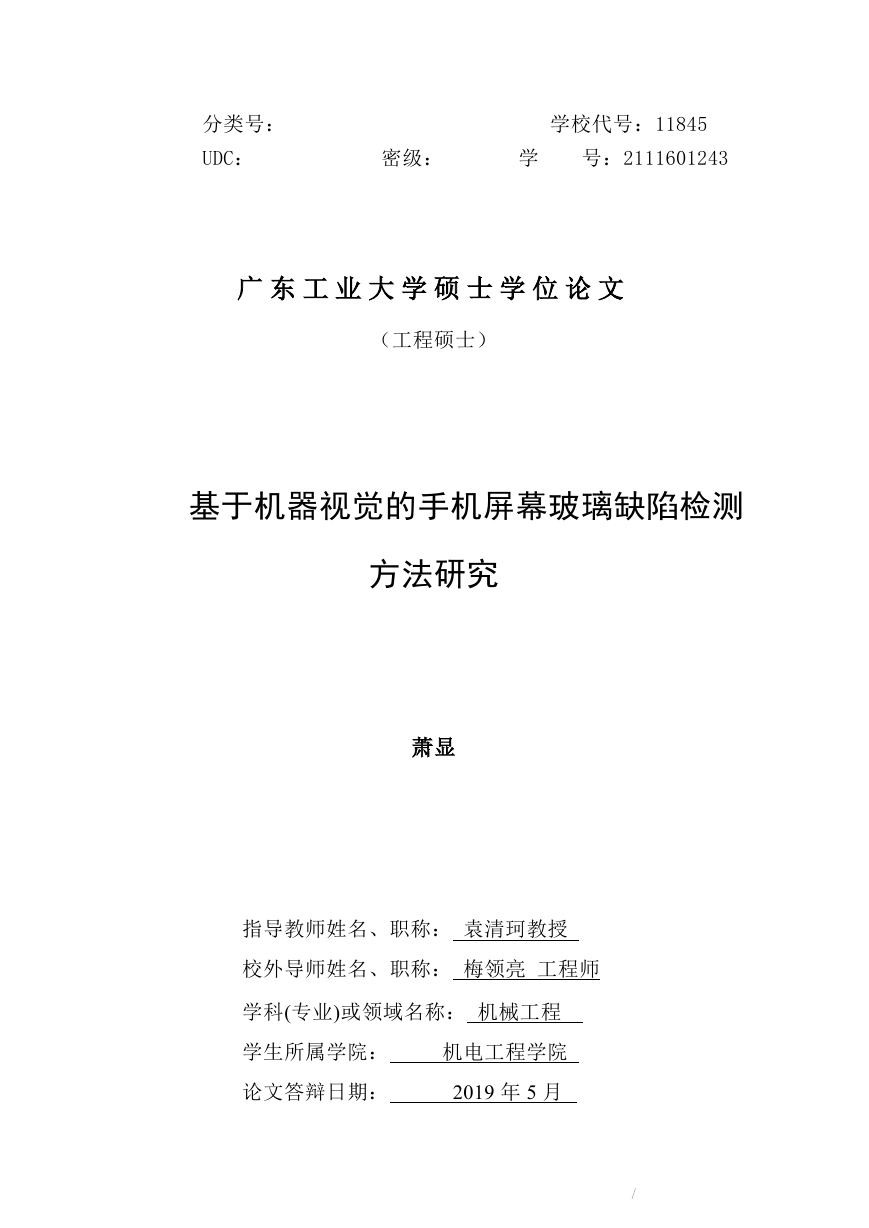
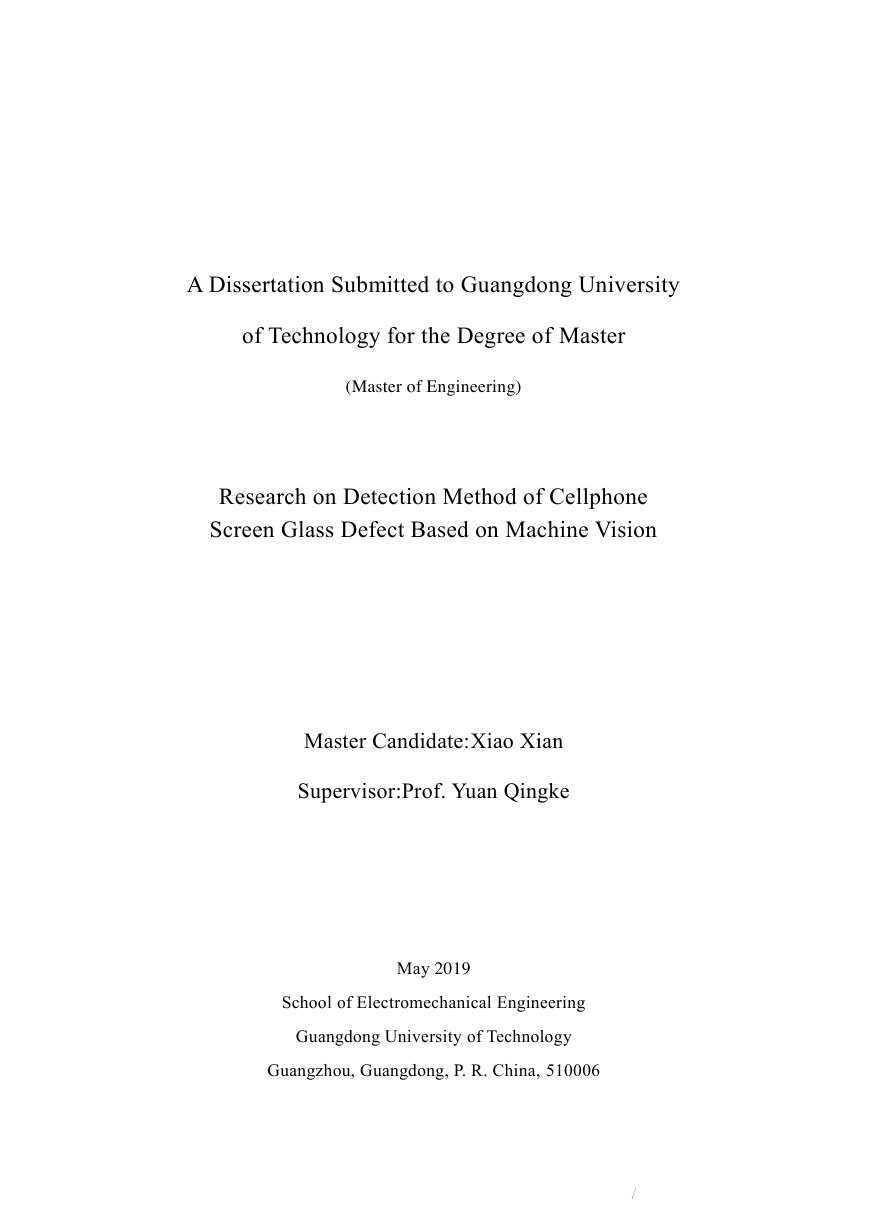
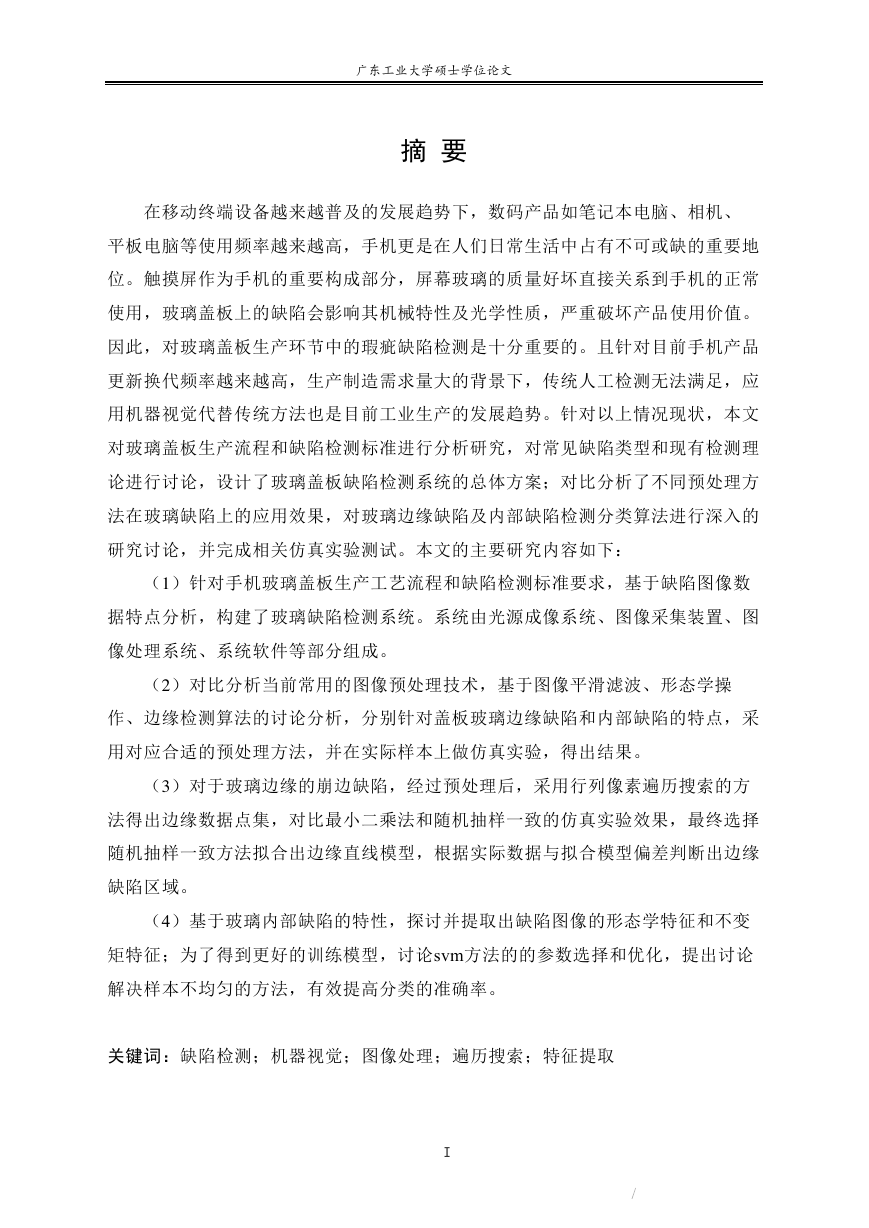
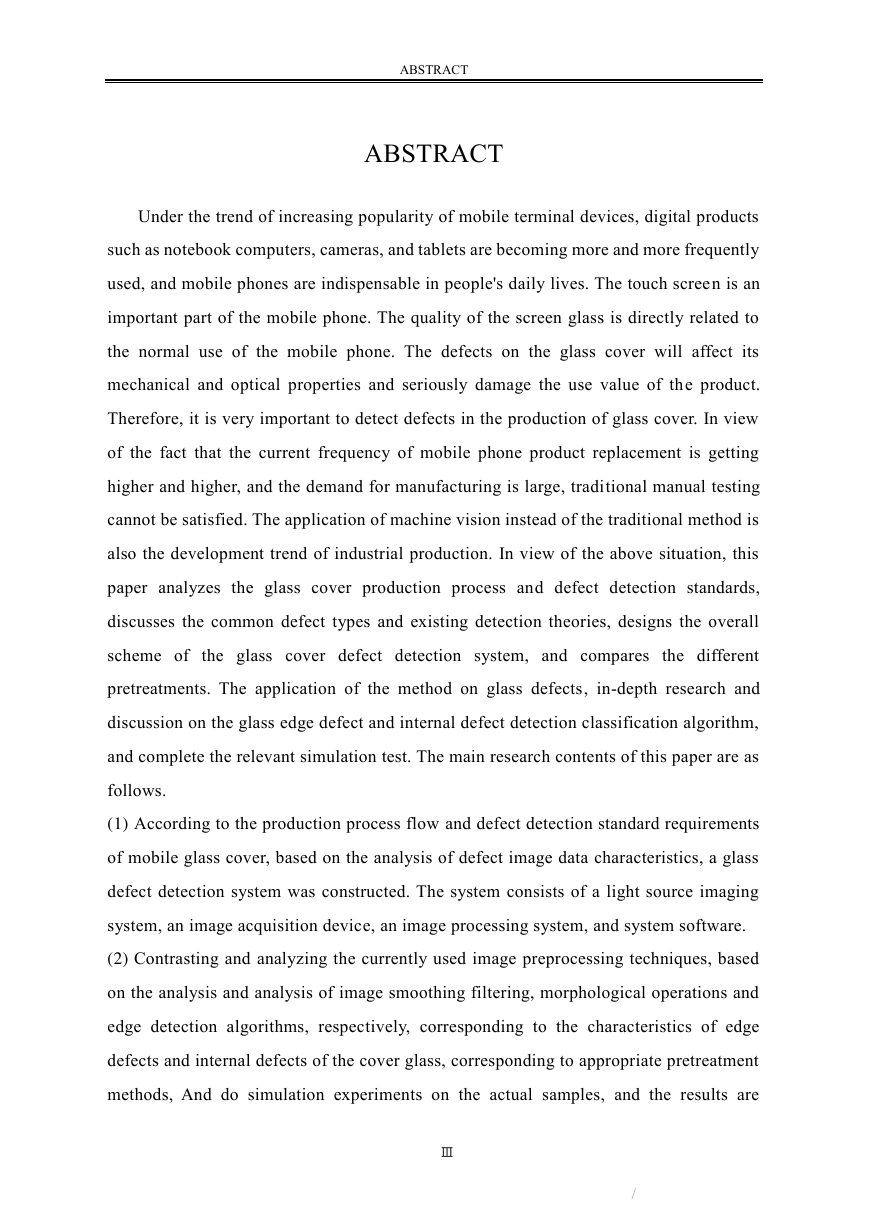
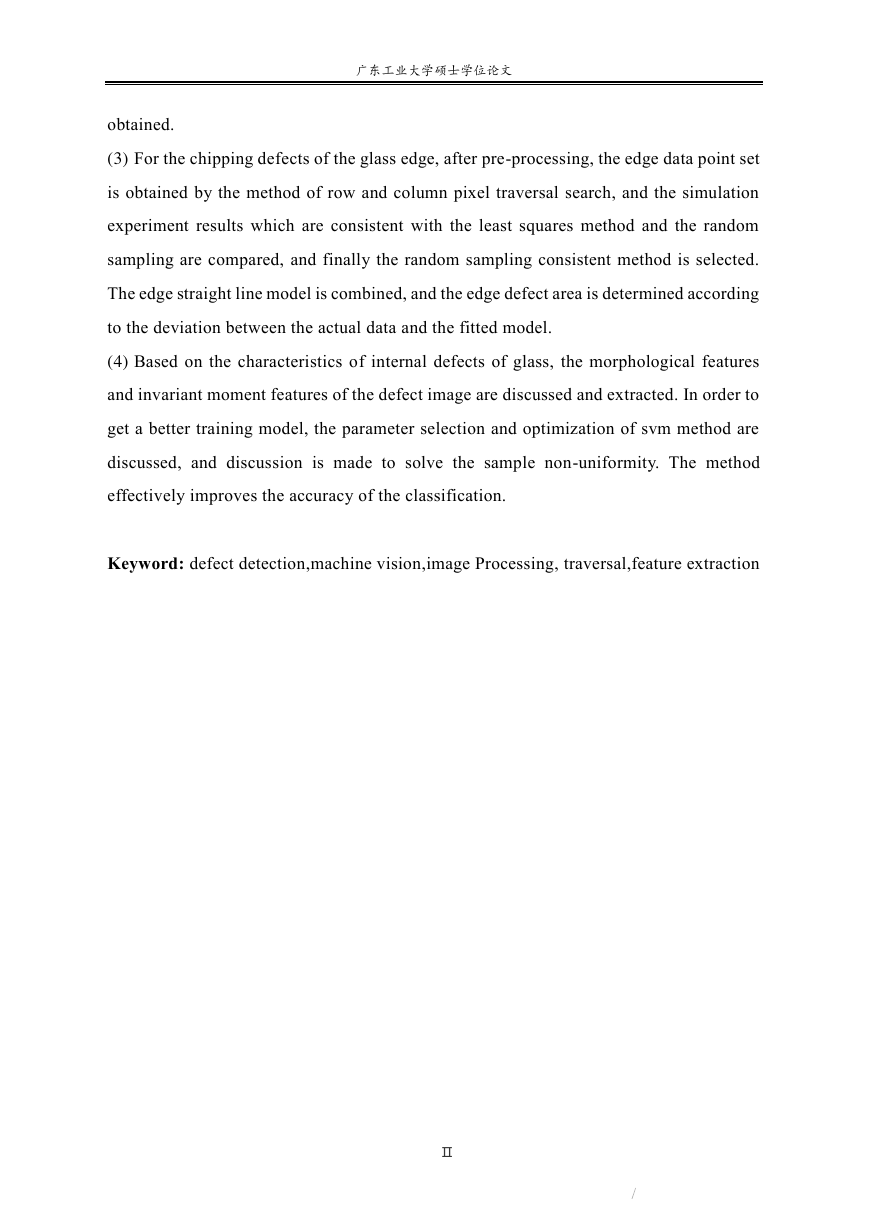

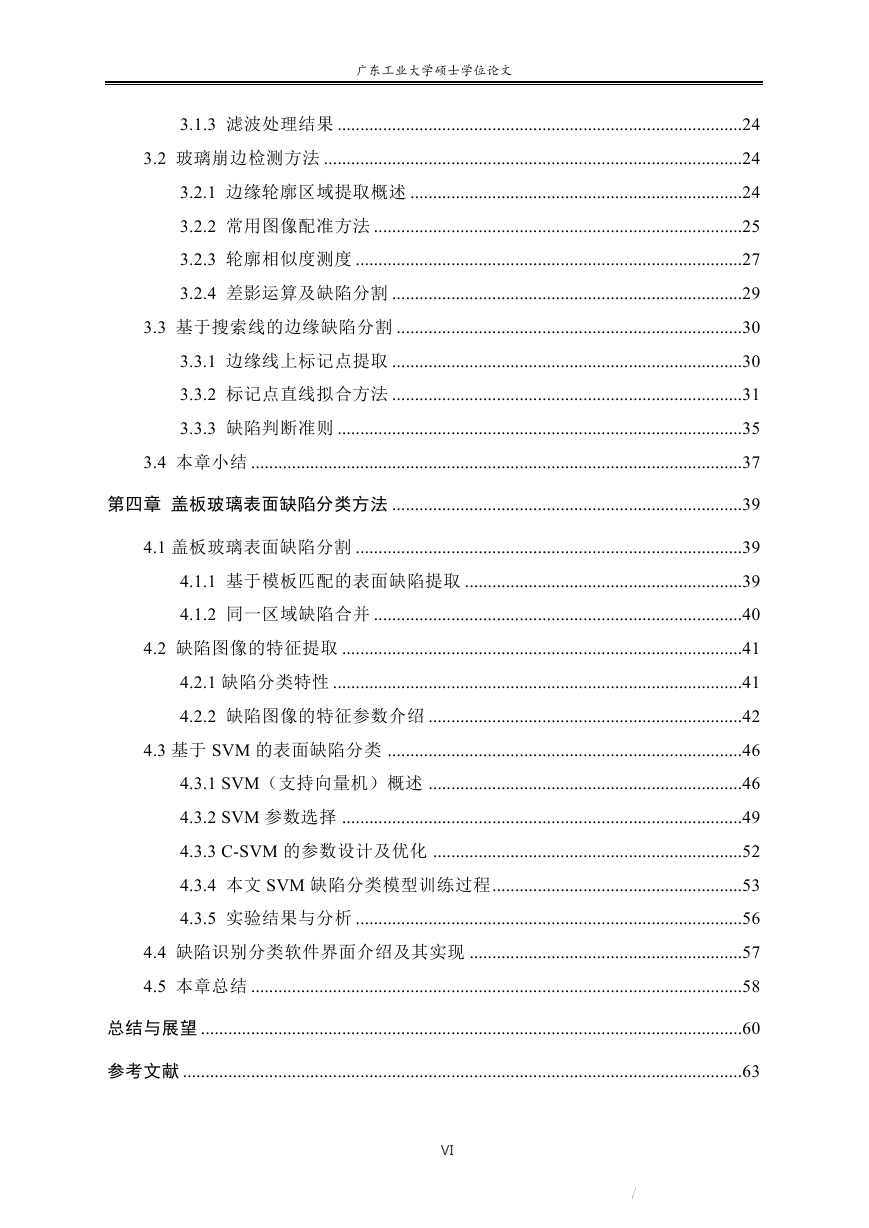








 2023年江西萍乡中考道德与法治真题及答案.doc
2023年江西萍乡中考道德与法治真题及答案.doc 2012年重庆南川中考生物真题及答案.doc
2012年重庆南川中考生物真题及答案.doc 2013年江西师范大学地理学综合及文艺理论基础考研真题.doc
2013年江西师范大学地理学综合及文艺理论基础考研真题.doc 2020年四川甘孜小升初语文真题及答案I卷.doc
2020年四川甘孜小升初语文真题及答案I卷.doc 2020年注册岩土工程师专业基础考试真题及答案.doc
2020年注册岩土工程师专业基础考试真题及答案.doc 2023-2024学年福建省厦门市九年级上学期数学月考试题及答案.doc
2023-2024学年福建省厦门市九年级上学期数学月考试题及答案.doc 2021-2022学年辽宁省沈阳市大东区九年级上学期语文期末试题及答案.doc
2021-2022学年辽宁省沈阳市大东区九年级上学期语文期末试题及答案.doc 2022-2023学年北京东城区初三第一学期物理期末试卷及答案.doc
2022-2023学年北京东城区初三第一学期物理期末试卷及答案.doc 2018上半年江西教师资格初中地理学科知识与教学能力真题及答案.doc
2018上半年江西教师资格初中地理学科知识与教学能力真题及答案.doc 2012年河北国家公务员申论考试真题及答案-省级.doc
2012年河北国家公务员申论考试真题及答案-省级.doc 2020-2021学年江苏省扬州市江都区邵樊片九年级上学期数学第一次质量检测试题及答案.doc
2020-2021学年江苏省扬州市江都区邵樊片九年级上学期数学第一次质量检测试题及答案.doc 2022下半年黑龙江教师资格证中学综合素质真题及答案.doc
2022下半年黑龙江教师资格证中学综合素质真题及答案.doc